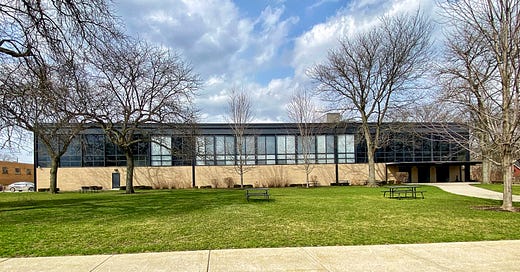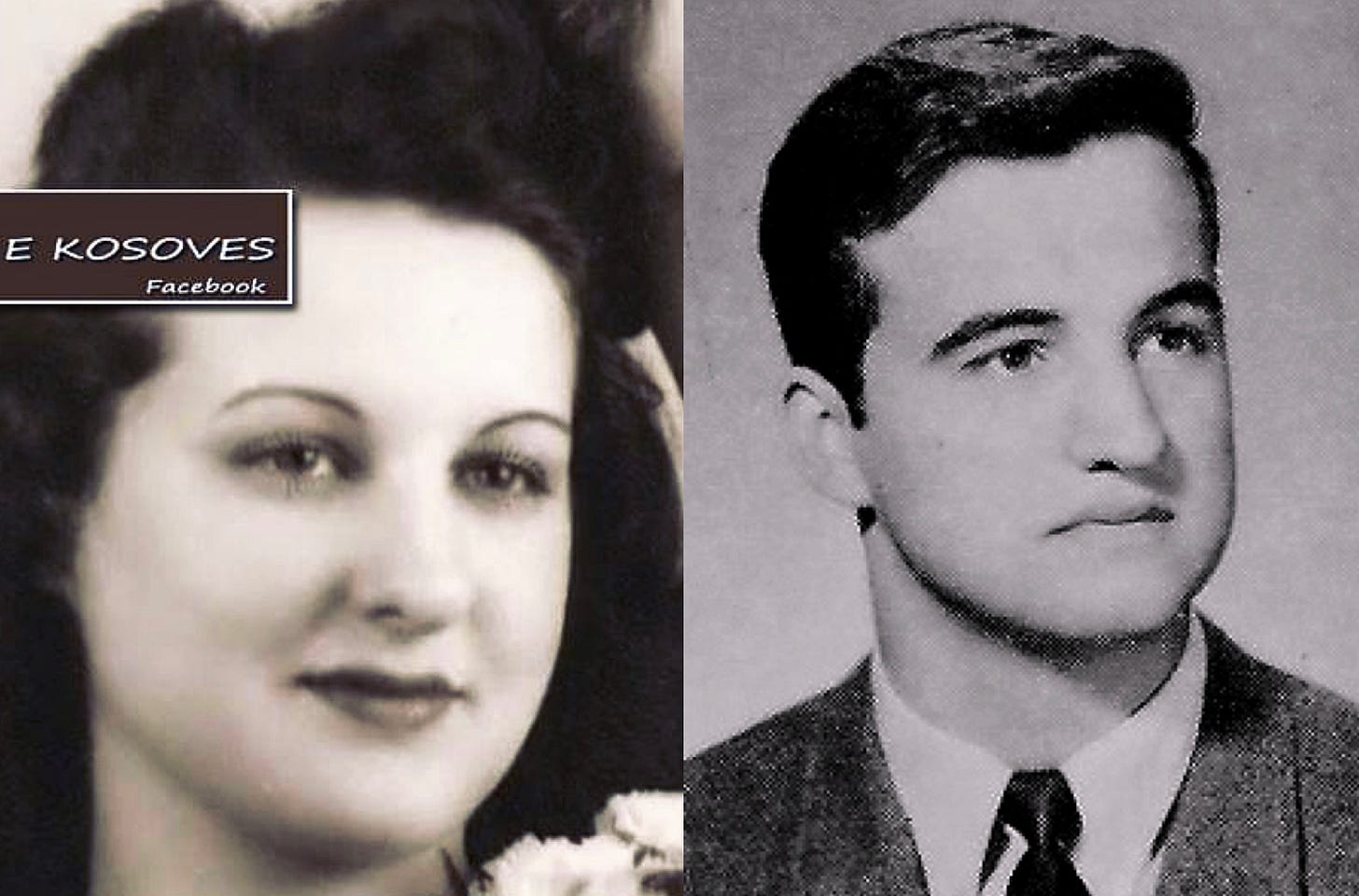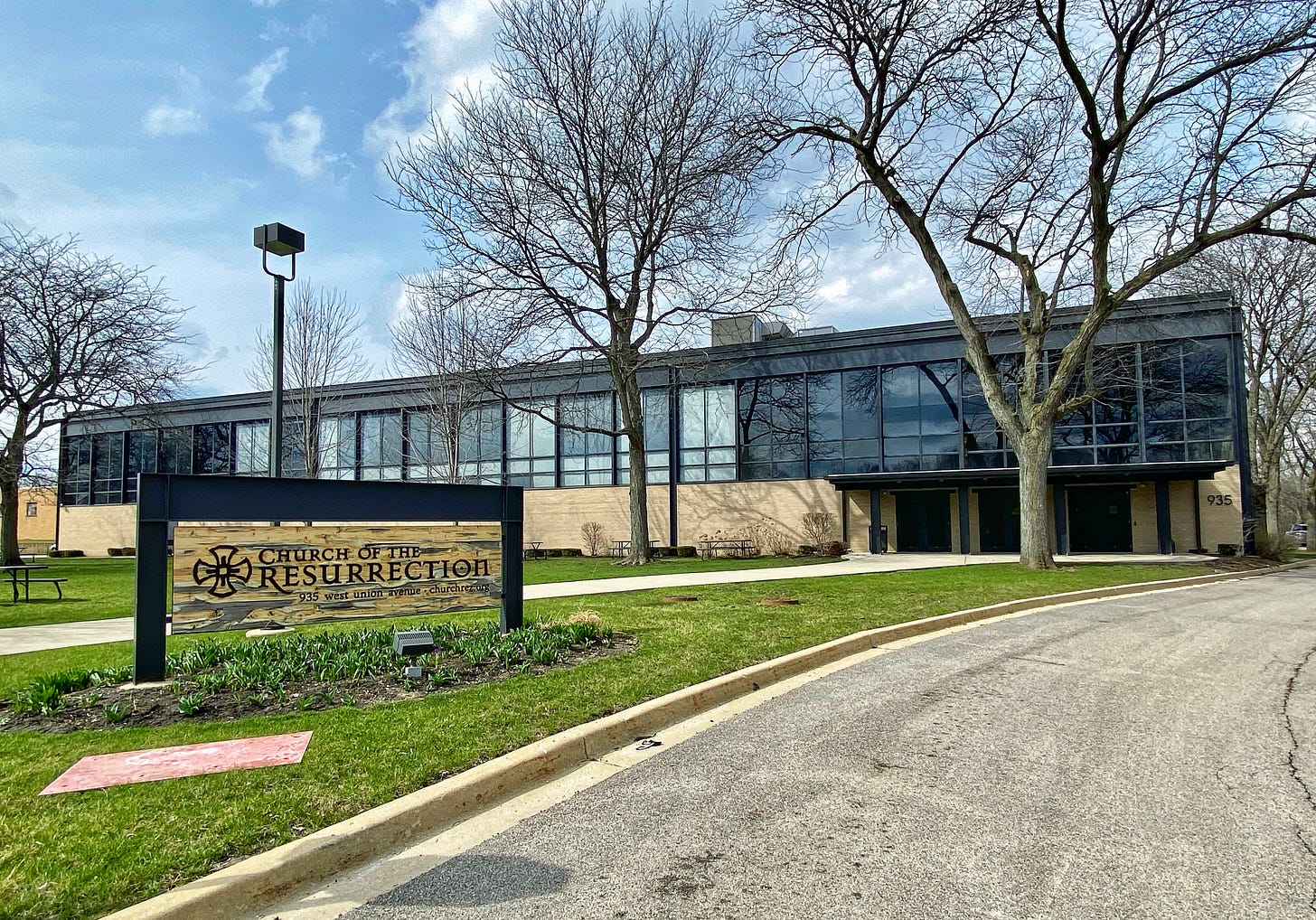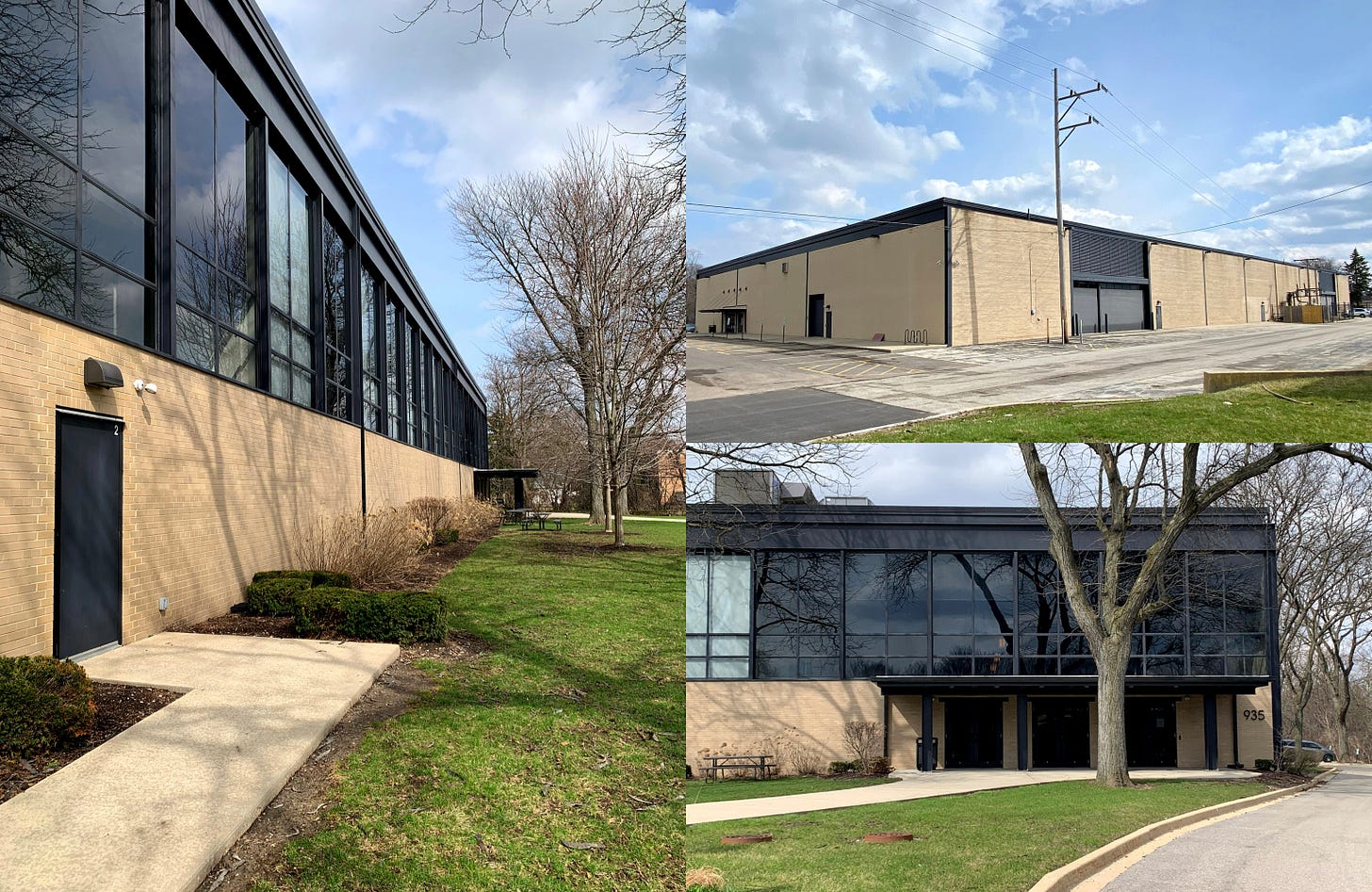Adaptive Reuse: David Haid's Plastofilm Building
I’ve been spending more time in nature lately, mainly for my mental health. But I’m still drawn to architecture wherever I go, even while exploring the Illinois Prairie Path. A couple months ago I came across Lincoln Marsh, a nature preserve in suburban Wheaton. There was a walking trail of woodchips and boardwalks full of great scenery, including lots of turtles hanging out in the waters. But what really caught my attention was the Miesian-like structure next to Lincoln Marsh’s entrance at Lincoln and Union Avenues, which are pretty much dead-end streets in a manufacturing zone. Nestled between a a residential neighborhood and railroad tracks, the only activity around here are people going to the marsh or this particular building.
Originally built for Plastofilm Industries, a plastic package manufacturer, who hired architect David Haid to design an office building and industrial factory in 1965 (although construction wasn’t completed until 1971-72) at a cost of $700,000. Flexibility was needed for a constantly changing industry so the interior space was left almost completely void of columns. A roof plate and six overhead trusses support the light-brick structure with black steel outlining the glass windows. It looks like something that could have been designed by Haid’s mentor, Mies van der Rohe.
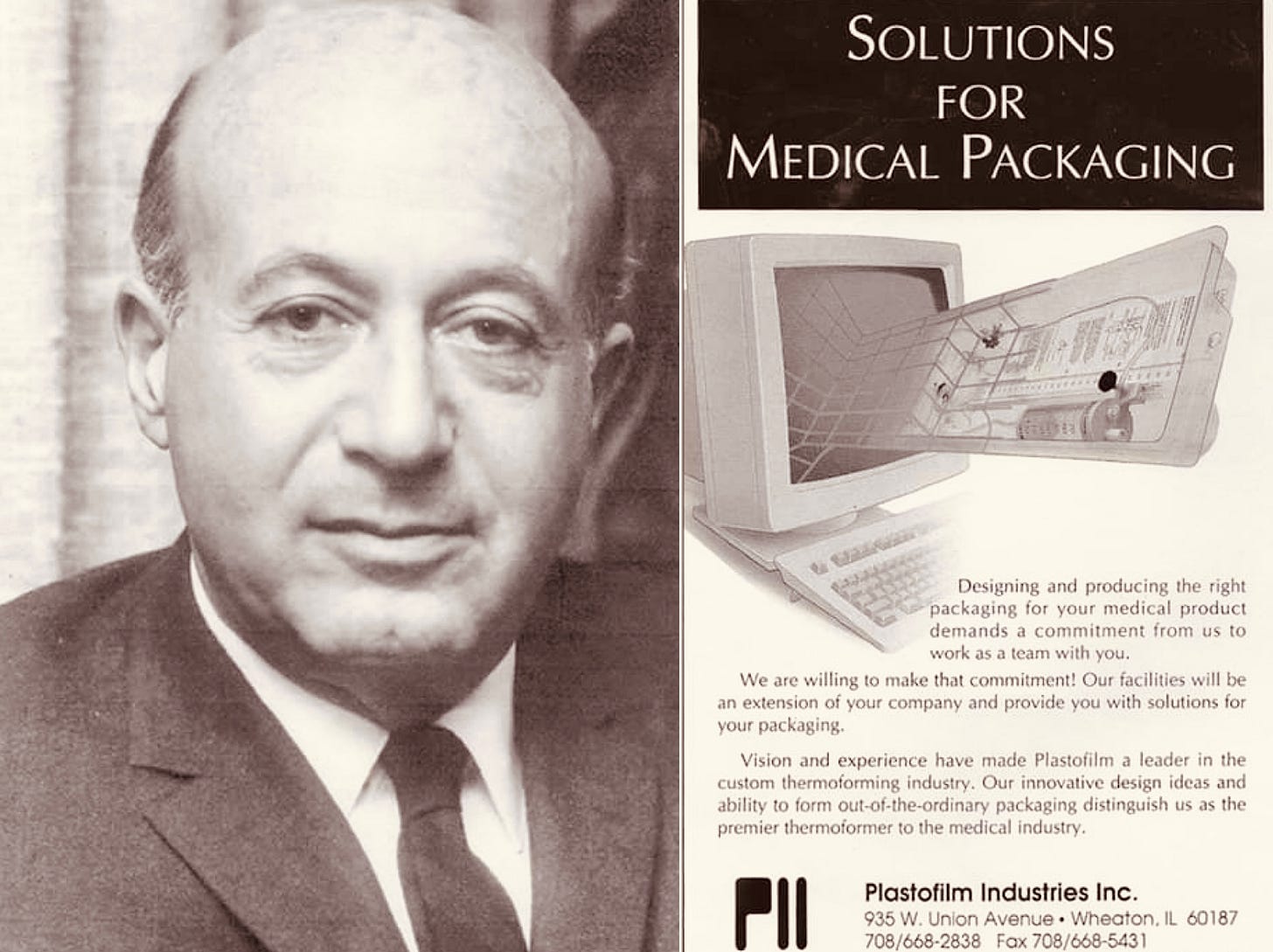
This plastics company was supposedly the first in the thermoforming industry, and even at one time had the world’s largest customized plant. George Wiss, an engineer who emigrated from Yugoslavia in 1939 started out with a contract from the U.S. Army to recover silver oxide from photographic film sheet during WWII bombing missions. He was left with a pile of clear cellulose acetate butyrate sheets. Instead of throwing the film away Wiss found a new use for it, which reportedly led to the invention of the first vacuum forming machine and process (he was the co-author of its patent). It was first used in boxes to hold corsages for the big bands that played at Navy Pier in Chicago. In 1957 the company started its first thermoforming production line and two years later established the first high-speed, inline continuous forming machine (reputedly another original invention). Plastofilm had five plants on three continents, including this one in Wheaton.
Many locals and their children were employed by Plastofilm, including Agnes Belushi and her son John who lived nearby in Wheaton. As described in his 2008 obituary, Wiss “created a little ‘United Nations’ employing hundreds of people from very different backgrounds” who always referred to their boss as George.
After George Wiss retired, the company was sold to a series of buyers. Four years after Alcoa bought what was left of Plastofilm in 2004 (then down to $3 million in sales), it was purchased by a thermoformer and injection molder based in Reading, Pa. The former Plastofilm plant became vacant in 2005. A parishioner of the Church of the Resurrection, who was also a land developer, saw an auction advertisement for the building in 2010. He bought the structure and its surrounding four acres for $400,000, which was later acquired by the church.
Between 2011-12 architect and structural engineer Dave Skiffington completed an adaptive reuse of the 90,000 sq ft warehouse for the local church. His firm removed two interior columns and added architectural rod trusses, which helped open up the space for the new sanctuary's 1000-seat worship center. Massive ductwork runs from the back to front in the high ceilings while sunlight streams into the open space from the south-facing windows. The church honored Haid’s simple design and use of natural materials in their renovation project. Resurrection is defined as “rising from the dead” and one can say that’s true of this secular building that was converted for religious use. A new purpose was found for the property, while also remaining faithful to its industrial past.

In 1951 David Haid came to Chicago from his native Canada to study at the Illinois Institute of Technology with Mies van der Rohe, who was head of the school’s architecture department. That same year, the 22-year-old joined Mies' office, where he worked for nine years. In 1963 he founded his own architectural firm, David Haid & Associates. As a notable disciple of Mies, it’s no surprise that Haid’s designs show his influence, whether it was own low, austere home in Evanston or what is probably his best known building - the Ben Rose automobile pavilion (1974) in Highland Park - which was featured in the film Ferris Bueller’s Day Off. In a Chicago Tribune article from 1982, Haid said "Anything we build should not be for the sake of fashion or it will be dated. I think that a good building will always stand the test of time.” I think you can say that’s true of his modern design for Plastofilm Industries, which has been given a new purpose and will hopefully live on for another century.
Sources:
100 Years of Architecture in Chicago: Continuity of Structure and Form by Oswald W. Grube, Peter C. Pran, and Franz Schulze
Building Faith: A Sociology of Religious Structures by Robert Brenneman & Brian J. Miller
https://www.ptonline.com/articles/rockin-reunion-for-alumni-of-worlds-first-biggest-thermoformer
“You Know You’re From Wheaton IL If…” Facebook Group

